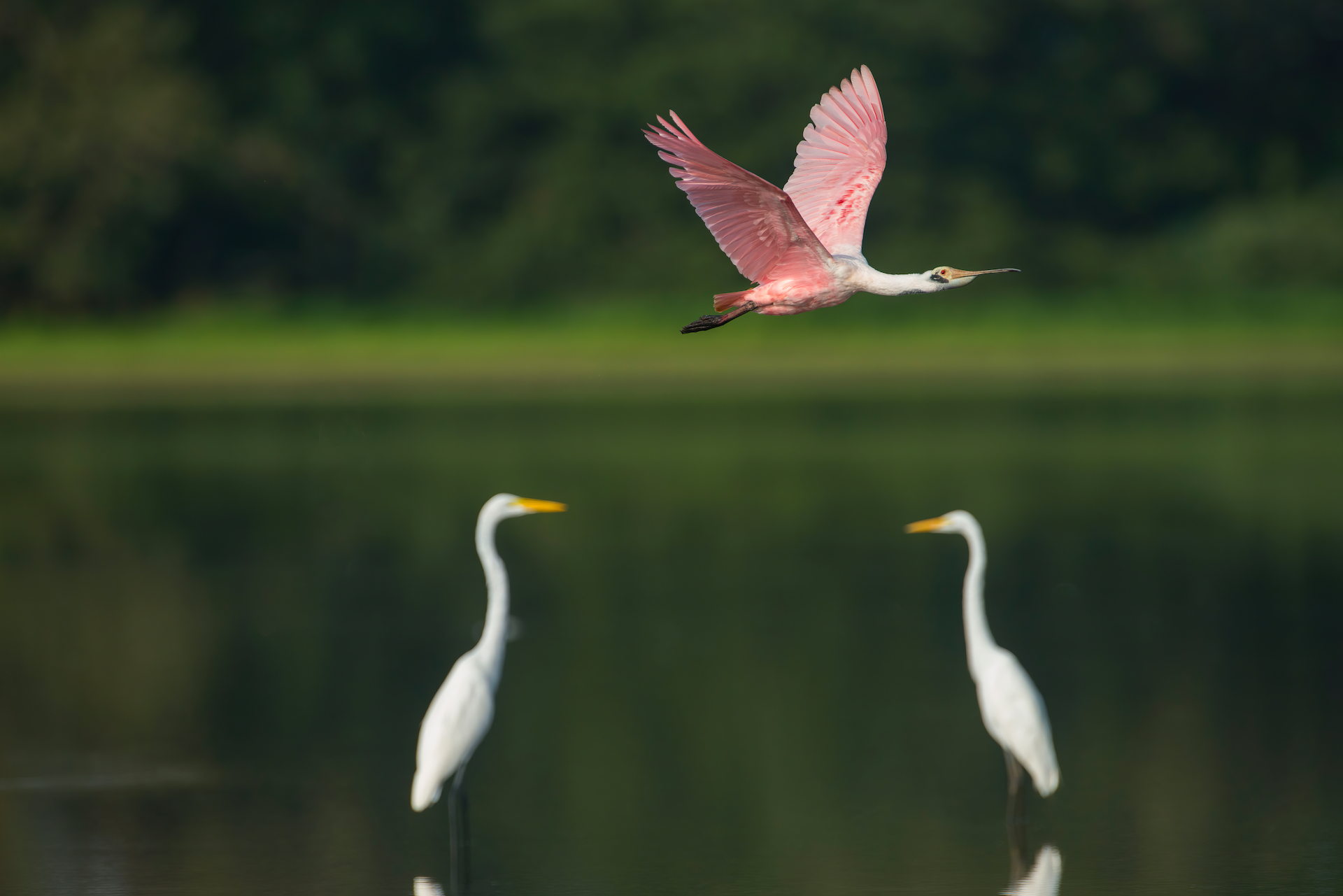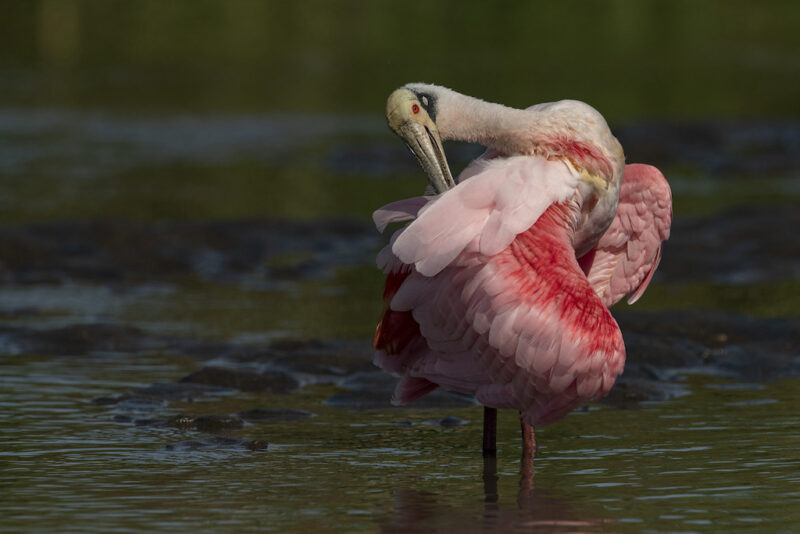All about the Roseate Spoonbill

How does it look?
The roseate spoonbill is a large wading bird known for its pink plumage and distinctive spoon-shaped bill. Its upper neck and back are colored white, while the wings and feathers underneath display the more recognizable light shade of pink.
The wings and tail coverts are deep red, along with the legs and the iris of the eyes. Part of the spoonbill’s head is a distinct yellow-green. When they are young, the birds are duller in appearance, brightening as they mature.
What is its size?
Reaching a height of up to 2.5 feet (80 centimeters), the roseate spoonbill’s wingspan can stretch 1.5 times as wide, reaching up to 4 feet (120 centimeters).
Habitat in Costa Rica.
Fairly common in Caño Negro region and around Gulf of Nicoya, uncommon elsewhere in lowlands and western Central Valley; to 3,000 ft (900 m). Individuals and groups forage in shallow water of open wetland habitats. In the Tarcoles area by the river and the mangrove forest are quite common.
Ways of communication.
While feeding, spoonbills utter a low, guttural sound. They are also known to call during breeding displays and when flying.
Feeding Habits
Using its spoon-like bill to scoop prey up from shallow water, the roseate spoonbill’s diet typically includes minnows, small crustaceans, insects and bits of plants. They feed in the early morning and evening hours in both fresh and saltwater wetlands. It is believed the roseate spoonbill receives its bright coloring from the pigments of the crustaceans that it eats.
Social Structure
A social bird, the roseate spoonbill often feeds, roosts and flies in formation with its species. They nest singly or in pairs, usually in trees over water and sometimes on small islands.
Reproduction
Typically roseate spoonbills do not breed until their third year. To attract one another, courtship displays include ritualized exchanges of nest material, dancing and clapping. Female spoonbills create deep, well-constructed nests out of sticks using materials brought to them by males.
A female lays a clutch of one to five eggs. Both parents share incubation duties, which last about 22 to 24 days. A newly hatched chick has mostly pink skin with a sparse covering of white down. The parents feed the chick by dribbling regurgitated material into the baby’s upturned bill. After one month, the chick will begin to exercise by clambering through the branches or foliage surrounding the nest, and by six weeks, it will have developed wing feathers large enough for flight.
Sleep Habits
The roseate spoonbill sleeps standing, usually on one leg, with its head tucked beneath its back and shoulder feathers.
Lifespan
They can live up to 15 years in human care and an estimated 10 years in the wild.
References:
The Birds of Costa Rica A field guide by Richard Garrigues Link

